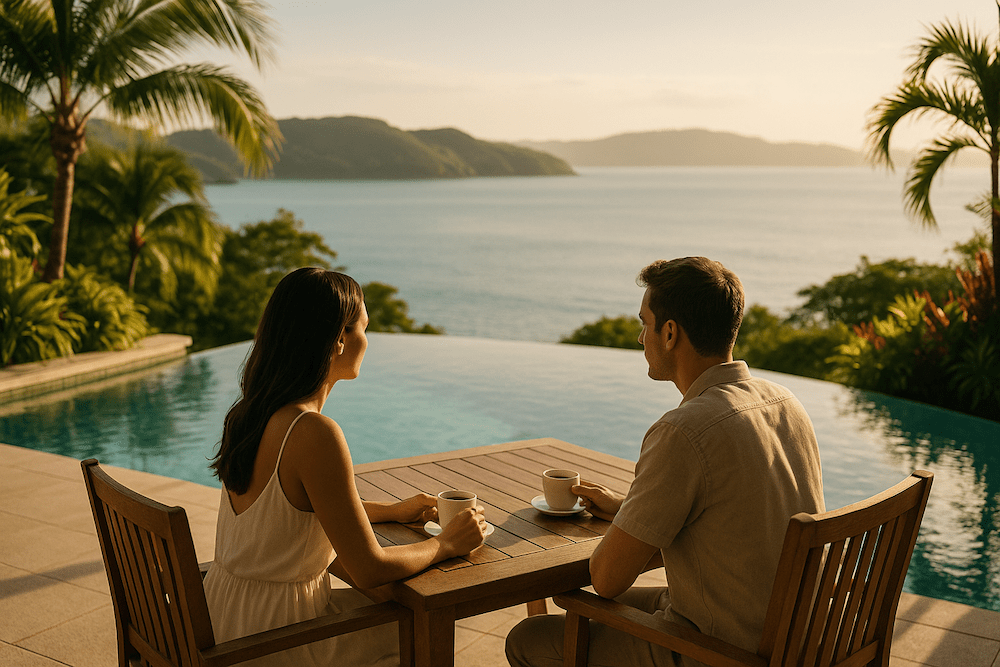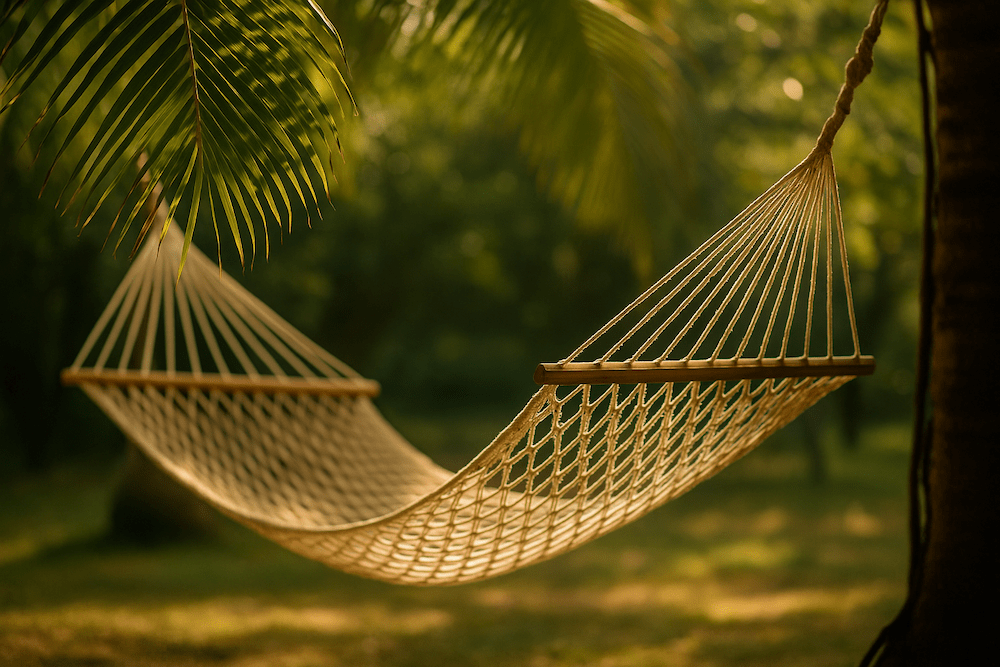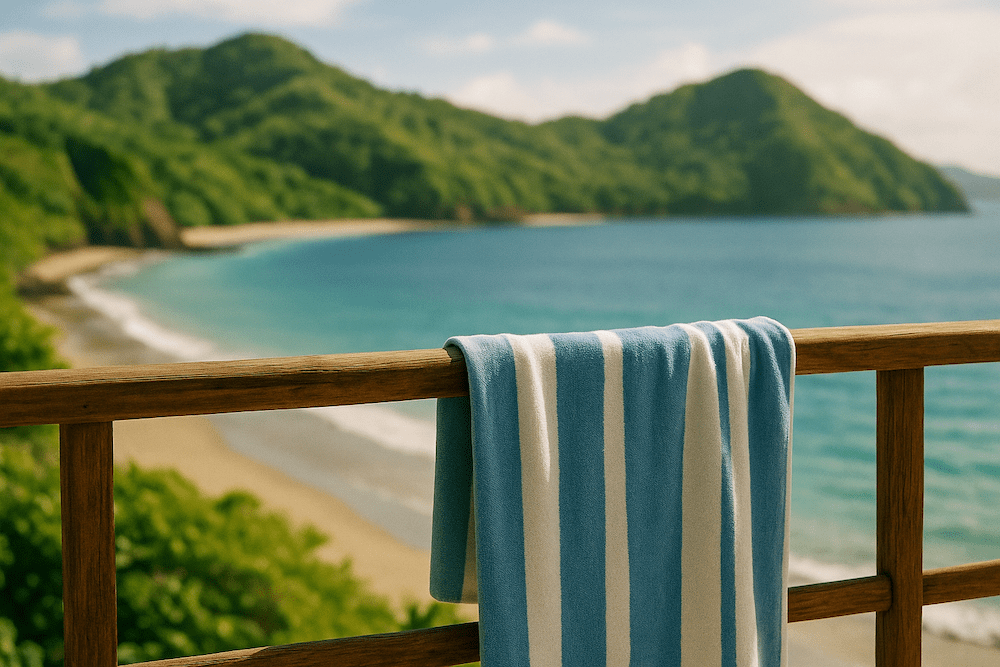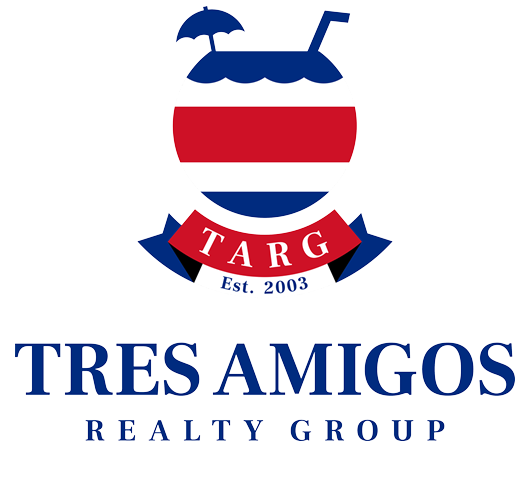A World in Transition: Why More People Are Looking Abroad
When the world began to feel unsteady—economically, politically, even environmentally—many North Americans started asking a question their parents never had to: what’s my plan B? For some, it meant diversifying investments. For others, it meant something more radical: finding a new place to live, where daily life felt a little more predictable and a lot more peaceful.
Over the past three decades, Costa Rica has quietly become one of the most sought-after destinations for those searching for balance. A stable democracy tucked between two oceans, the country offers both safety and soul. And within Costa Rica, one region stands above the rest—the Papagayo area of Guanacaste, where clear waters meet well-paved roads and world-class resorts share hillsides with discreet ocean-view villas. Here, people are not simply vacationing. They’re building new lives.
Why Costa Rica Stands Out
Costa Rica’s appeal begins with its history. The country abolished its army in 1948, choosing to redirect funds into education and healthcare. The result is a population with a 97% literacy rate and one of the most stable democracies in the Western Hemisphere. Corruption exists, as it does everywhere, but it’s held in check by functioning institutions and a deep cultural commitment to civic peace.
For investors, equal property rights for foreigners are a major advantage. There are no restrictions on ownership—foreigners can buy, sell, and lease property with the same rights as citizens. Add to that a strong property registry and straightforward legal process, and Costa Rica stands in contrast to many developing markets where paperwork can be opaque or enforcement unreliable.
The country is also remarkably connected. Liberia International Airport, located just 25 minutes from the Papagayo coast, offers direct flights from dozens of North American cities. Roads in Guanacaste are well maintained, and fiber-optic internet is available throughout much of the region. Renewable energy—hydroelectric, wind, and geothermal—powers almost the entire nation. The message is clear: Costa Rica is modern, forward-looking, and open to the world.
Safety and Security: The Real Picture
Ask most people about moving abroad, and the first question is always about safety. Costa Rica, like anywhere, has areas best avoided—chiefly the Caribbean port of Limón, where shipping traffic has contributed to higher rates of crime. But in the Papagayo region, the story is very different. Here, beaches are lined with family-owned restaurants and boutique resorts, and violent crime is remarkably rare.
Many expats live in gated communities with local police support and private security patrols. Even outside these developments, neighborhoods are close-knit and community-oriented. Compared to major U.S. cities, the risk of violent crime is notably lower. In Papagayo, you can still see families riding bikes to the beach or taking evening walks through their neighborhood. It’s not utopia—but it’s about as close as modern life allows.
Real Estate Investment in Costa Rica
Foreigners have been buying property in Costa Rica since the 1970s, but the market has matured significantly in the last 20 years. The country’s transparent property registry makes ownership straightforward, and buyers don’t need a local partner or corporation to purchase real estate. A good attorney and due diligence are essential, as always, but the framework is sound.

Investment opportunities are diverse. Some buyers acquire homes for vacation use and short-term rentals, capitalizing on Costa Rica’s steady flow of tourists. Others buy land or condos as part of a long-term plan to relocate or retire. Values vary widely by region, but coastal areas with strong infrastructure and international access—like Papagayo—tend to hold their value even through economic downturns.
In recent years, a growing number of investors have looked to Costa Rica as a hedge against volatility in their home markets. Real estate here isn’t just a financial asset—it’s a lifestyle asset, backed by tangible natural beauty and a stable government.
The Papagayo Region: Costa Rica’s Premier Investment Zone
The Papagayo region extends from Playa Matapalo north to the Papagayo Peninsula, encompassing Playa Ocotal, Playas del Coco, Playa Hermosa, and Playa Panamá. It’s a stretch of coast known for calm bays, golden sand, and some of the best infrastructure in Central America. At its heart lies the Peninsula Papagayo, home to the Four Seasons, Waldorf Astoria, Andaz, and Planet Hollywood—all indicators of deep, sustained investment confidence.
Accessibility is one of Papagayo’s greatest strengths. The region sits just 25 minutes from Liberia International Airport, where travelers can fly directly from cities like Houston, Miami, Toronto, and Los Angeles. Roads are paved, utilities are reliable, and high-speed internet is readily available—small details that make daily life effortless.
Market data reinforces Papagayo’s resilience. Property values have shown remarkable stability, even during global slowdowns. Homes in gated communities like Pacifico or Hermosa Heights maintain strong resale demand thanks to limited supply and consistent interest from international buyers. Rental returns are robust too, driven by both vacation tourism and long-term executive housing linked to the area’s luxury resorts.
While other coastal regions can be charming, they don’t always offer the same investor confidence or liquidity. In Papagayo, the combination of infrastructure, accessibility, and prestige creates a market with enduring depth.
The Lifestyle: Pura Vida in Practice
What ultimately draws people to Papagayo isn’t just investment—it’s lifestyle. Mornings often begin with a swim in the bay or coffee on a shaded terrace as howler monkeys call from the trees. Afternoons might mean a round of golf, a dive at the Catalina Islands, or a sunset walk on Playa Hermosa. Evenings bring open-air dining, ocean breezes, and the kind of conversations that stretch late into the night.

The community is international yet deeply Costa Rican in spirit. Locals and expats mingle naturally, sharing the same appreciation for simplicity, nature, and time well spent. The phrase “Pura Vida”—literally “pure life”—is more than a slogan; it’s a worldview. In Papagayo, success is measured less by possessions and more by peace of mind.
Language and Integration
For many North Americans, the prospect of living abroad raises a practical concern: language. In Papagayo, English is widely spoken—in restaurants, shops, hospitals, and real estate offices. Many Costa Ricans in the region have lived or studied abroad, and there’s genuine openness to multicultural communities.
That said, learning Spanish—even a little—deepens the experience. It’s not a necessity for daily life, but it’s a gateway to richer connections. Locals are patient and friendly, often switching seamlessly between languages. Integration here isn’t about fitting in perfectly; it’s about participating sincerely.
Healthcare Access and Quality
Costa Rica’s healthcare system is one of the strongest in Latin America. It operates on a dual model: a public system known as the Caja Costarricense de Seguro Social (CCSS), and a network of private hospitals and clinics. Many expats use both—public care for routine services and private facilities for specialized treatments.
Private care is affordable and modern, with bilingual doctors trained in North America and Europe. In the Papagayo region, residents have access to hospitals in Liberia, including private facilities offering emergency and surgical care. For advanced procedures, top-tier hospitals in San José rival those in the U.S. and Canada, often at a fraction of the cost.
It’s no surprise that Costa Rica has become a hub for medical and dental tourism. Many retirees find that quality healthcare here enhances—not compromises—their quality of life.
Residency and Visa Options
For those planning to stay long-term, Costa Rica offers several residency paths. The Investor Residency requires a minimum investment of $150,000 in real estate or a local business. The Pensionado category is designed for retirees who can demonstrate a fixed monthly income, typically from a pension or Social Security. The Rentista category fits those with proof of guaranteed income, such as annuities or dividends.
Processing usually takes six to eight months, and once approved, residents can stay year-round, enroll in public healthcare, and open local bank accounts. The requirements are transparent, and many applicants use local attorneys who specialize in immigration to navigate the paperwork. Residency isn’t mandatory to own property—but it simplifies life for those who plan to spend most of the year in Costa Rica.
Exit Strategy: Protecting Your Flexibility
One of the most reassuring aspects of buying in Papagayo is liquidity. Properties here attract steady international demand, meaning it’s relatively easy to resell or rent if your plans change. Many homeowners offset expenses by renting their properties seasonally, earning strong returns without the volatility of short-term speculation.
Costa Rica’s banking system allows funds to be repatriated abroad, and transactions are conducted in U.S. dollars for simplicity. Unlike many tropical markets where resale can be unpredictable, Papagayo’s established track record provides confidence that you can adjust course if needed—without sacrificing value.
Is Costa Rica Right for You?
Every move abroad begins with both excitement and uncertainty. Costa Rica’s Papagayo region offers something rare: a balance between the two. It combines safety, community, and nature with a robust investment foundation. It’s a place where retirees, digital nomads, and investors all coexist—each finding their own version of Pura Vida.

This isn’t a country without quirks. Bureaucracy can move slowly. Deliveries might arrive “mañana.” But in exchange for patience, you gain peace. Morning coffee comes with ocean views instead of traffic noise. The stress that once felt normal begins to fade. For many, that trade is worth far more than the numbers on a spreadsheet.
For those seeking not just a place to live, but a place to feel at peace—Costa Rica’s Papagayo region may be exactly where you’re meant to be.







